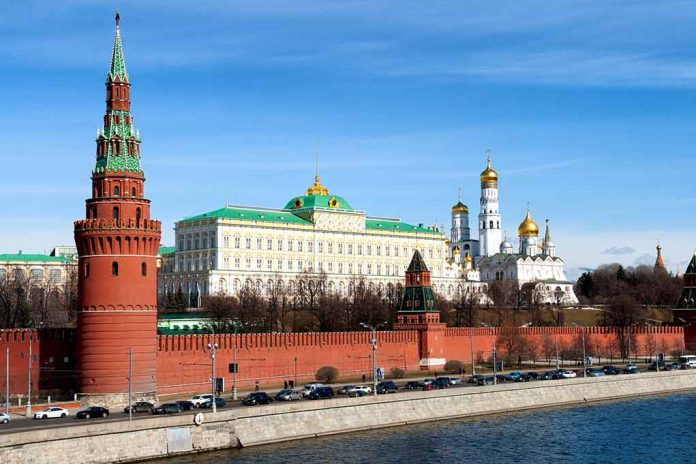
Russia is covertly influencing US social media through unsuspecting American influencers.
At a Glance
- Biden administration accuses Russia of running a prolonged disinformation campaign targeting US elections.
- The US Treasury sanctions top RT employees for disinformation activities.
- Russia uses real influencers to subtly sway US voter behavior.
- The Justice Department announces legal action against key operatives involved.
Biden Administration’s Accusation Against Russia
The Biden administration has directly accused Russia of an ongoing disinformation campaign aimed at American voters to influence the upcoming presidential elections. The administration highlighted that RT (Russia Today) and other Russian state-backed media are leading this effort to promote pro-Kremlin views.
The US Treasury Department has sanctioned RT’s editor-in-chief Margarita Simonyan and nine other employees. These sanctions came in response to their involvement in spreading misleading information to undermine US election confidence and foreign policy objectives, including support for Ukraine.
Western media suffers from never-ending paranoia over purported Russian meddling in US election
🔸 CNN cites the Justice Department as alleging that “some of the biggest stars” and “high-profile commentators” in right-wing social media “were, unwittingly, part of a sinister… pic.twitter.com/OfkrXCoXTk
— Sputnik (@SputnikInt) September 8, 2024
The Covert Operation Exposed
Reports reveal RT spent millions recruiting American influencers without informing them of the source of the funds. The influencers, trusted by millions, unknowingly spread pro-Kremlin messages, steering public opinion subtly yet effectively.
“We now know that RT, formerly known as Russia Today, has moved beyond being simply a media organization,” the US State Department spokesperson Matthew Miller said. “We know that RT has contracted with a private company to pay unwitting Americans millions of dollars to carry the Kremlin’s message to influence the US elections and undermine democracy.”
The scheme allowed Russia to covertly reach American audiences after RT America was dropped by cable distributors. The influence operation included contracting a private company to pay Americans to further Kremlin messages, with US Attorney General Merrick Garland condemning the disinformation campaign in multiple remarks during a Justice Department election threats task force meeting.
Legal Actions and Sanctions
Garland announced charges against two RT employees, Kostiantyn Kalashnikov and Elena Afanasyeva, for conspiracy to commit money laundering and violate the Foreign Agents Registration Act. They reportedly funneled nearly $10 million to contract online influencers through a Tennessee company, Tenet Media.
“The company never disclosed to the influencers or to their millions of followers its ties to RT and the Russian government,” Garland said on Wednesday.
This Nashville-based firm was responsible for producing content through these influencers, which amassed over 16 million views on YouTube, TikTok, Instagram, and X. Influencers were utilized for their established audiences, making the campaign far more effective than using fake personas.
The Response and Further Investigations
Attorney General Garland emphasized the focus on countering foreign malign actions: “We will be relentlessly aggressive, encountering and disrupting attempts by Russia and Iran, as well as China or any other foreign malign actor, to interfere in our elections and undermine our democracy,” Garland said.
He revealed the use of fictional persona Eduard Grigoriann to hide the true origin of the funding and detailed how American influencers were unwittingly involved. Due to these revelations, the US government has declared several measures, including limiting visa issuances for certain Russian state-backed media employees and offering rewards for information on election interference.
This multifaceted approach showcases a proactive stance by the administration against foreign interference, fortifying the integrity of US democratic processes.








